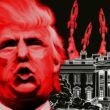Someone’s got a secret
By Pramit Pal Chaudhuri, December 19, 2012
India's public debate on nuclear issues — from nonproliferation policy to weapons doctrine to the safety of civilian nuclear power — is generally quite shallow, and the country’s culture of nuclear secrecy is the main reason. The secrecy arises from a number of factors, some of them particular to India and some of them external. One factor is that official structures like the Atomic Energy Act of 1962 restrict nuclear information and policy making to a small circle of people. The act places large segments of both the civilian and military nuclear programs under a cloak of secrecy so thick that even parliamentary supervision is constrained. Thus, nuclear decision making is restricted to a handful of scientists and bureaucrats, sometimes referred to as India's nuclear enclave, who function with little oversight and even less transparency. Strikingly, the military is not part of this circle, even though the military is in charge of the deployment of the nuclear arsenal.
Another factor contributing to excessive secrecy is that the nuclear program through the first two decades of its existence was shot through with ambiguity. Because of divisions within the nuclear fraternity, many of whose members were hostile to weaponization, there was great uncertainty about whether the program should have a military component. The country, therefore, developed a dual-track program without formally declaring a military aspect. Later, fears developed that — amid a sustained Western drive to undermine what was in effect a merged civilian and military nuclear program, which operated outside international safeguards — any nuclear information that India divulged would be used against it by the West. The international sanctions deployed against India’s nuclear efforts were very important in establishing a culture of secrecy and isolation among the country’s nuclear scientists.
A final factor is that, once India’s nuclear program appeared to be under siege from "neo-imperialist" foreigners and became wrapped in the flag, public acceptance of the nuclear program was assured. A nuclear mystique then developed, and this proved remarkably corrosive for genuine debate about nuclear policies. The nuclear program never faced much protest even as it became error-prone and in many respects remarkably inefficient. Debate on the program’s merits was highly stunted, intelligent assessment was almost impossible, and the public focused on symbolic accomplishments like nuclear tests. The program was sacrosanct and beyond debate, and its secrecy was seen as a necessity — even as a positive attribute.
Dogs not barking. Making matters worse in India, the institutions that serve as watchdogs in many societies — independent regulators, parliament, the media, and so on — all suffer from defects that dilute their ability to contribute to debate. The most obvious such problem is that the Atomic Energy Regulatory Board, the primary agency for monitoring the safety and security of India's reactors, is a derivative of the Department of Atomic Energy, the very body it is supposed to monitor. Its lack of autonomy was recently questioned by a government watchdog, the Comptroller Auditor General. And parliament, as noted, has been deliberately cut out of nuclear policy making, and it has even lost control over the nuclear program’s funding.
The media, meanwhile, suffers from severe structural problems. The media market, with over 500 television channels and 70,000 newspapers, is extremely competitive. It is driven by short-term concerns and little room exists for in-depth policy analysis. Stories are short, advertisements plentiful. Few if any newspapers have science correspondents, and none has a specialist devoted to nuclear issues. Most media outlets, like the public, buy into the narrative that past international sanctions required a secretive nuclear program — one that should still be treated as beyond reproach.
The consequence of all this is a nuclear establishment that does not feel the need to communicate with the public, and to a real degree is unable to do so. The public has largely accepted this isolationism. But as the nuclear program has become internationalized following the signing of a nuclear cooperation agreement between India and the United States, the flaws in developing a culture that saw itself as outside the realm of normal public debate have been revealed. Today, as public protests are carried out against civilian power reactors, and as the government avoids taking the initiative on bringing into force a nuclear test ban it once supported, we see the struggles of a nuclear establishment that has never had to explain itself to anyone — other than a prime minister and a dozen other people.
The Indian culture of nuclear secrecy, born of a nuclear mystique in the 1950s and several decades of international sanctions, is not merely obsolete. It is also becoming a liability for the expansion of India's nuclear power program. Though the lifting of a more than 30-year moratorium on nuclear trade with India was supposed to have opened the door to a large expansion of its nuclear power program, growth has been hindered by legal liability issues, political protests against nuclear power, and land acquisition problems — difficulties that are partly a consequence of, or have been greatly exacerbated by, the Department of Atomic Energy’s lack of transparency and weak public outreach. Now, the department and its affiliate bodies have begun to master the art of public diplomacy and mass communication. What is needed is for this new and growing openness to become institutionalized, thus ensuring that India’s culture of nuclear secrecy can come to a permanent end.
Topics: Nuclear Weapons
Share: [addthis tool="addthis_inline_share_toolbox"]














